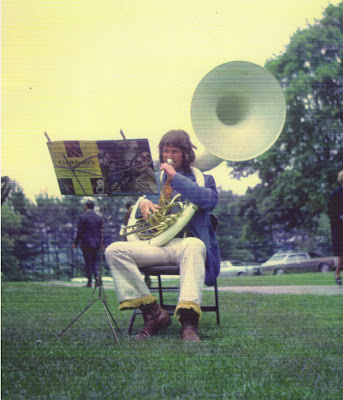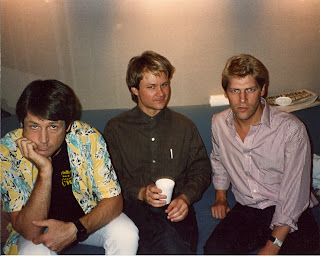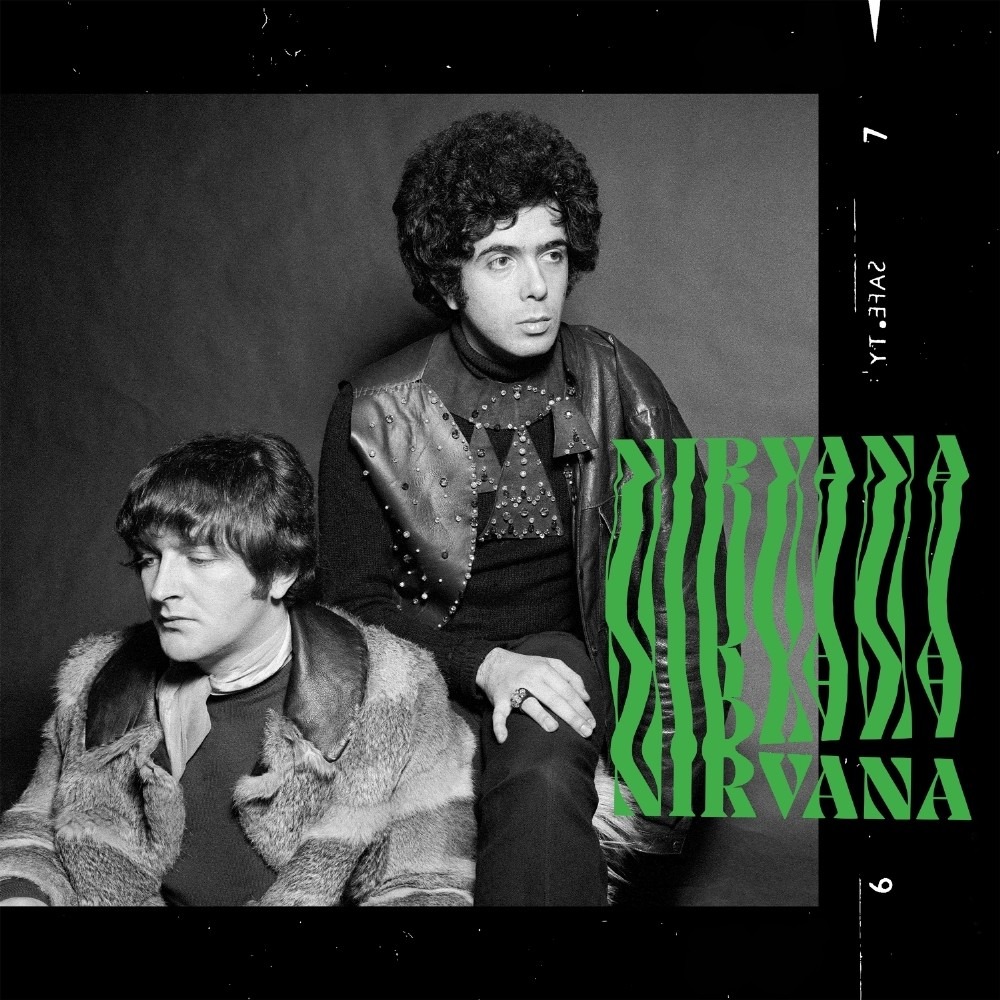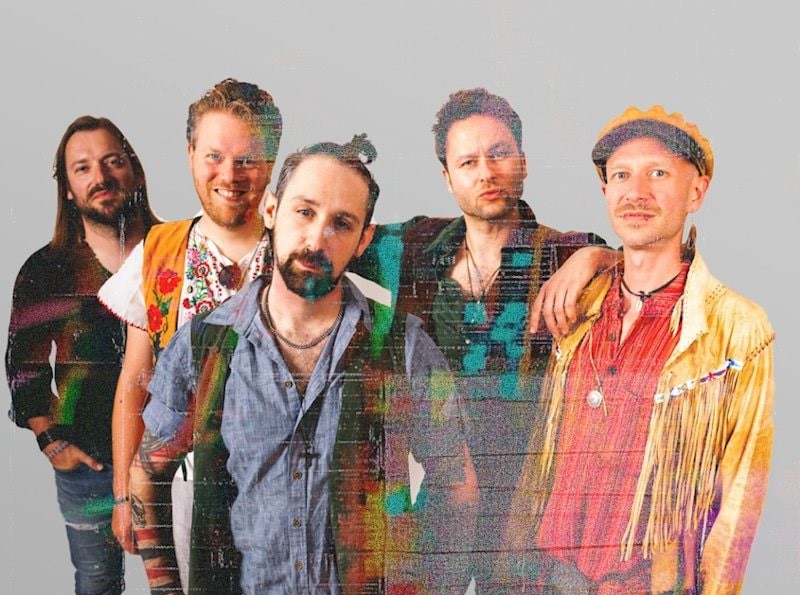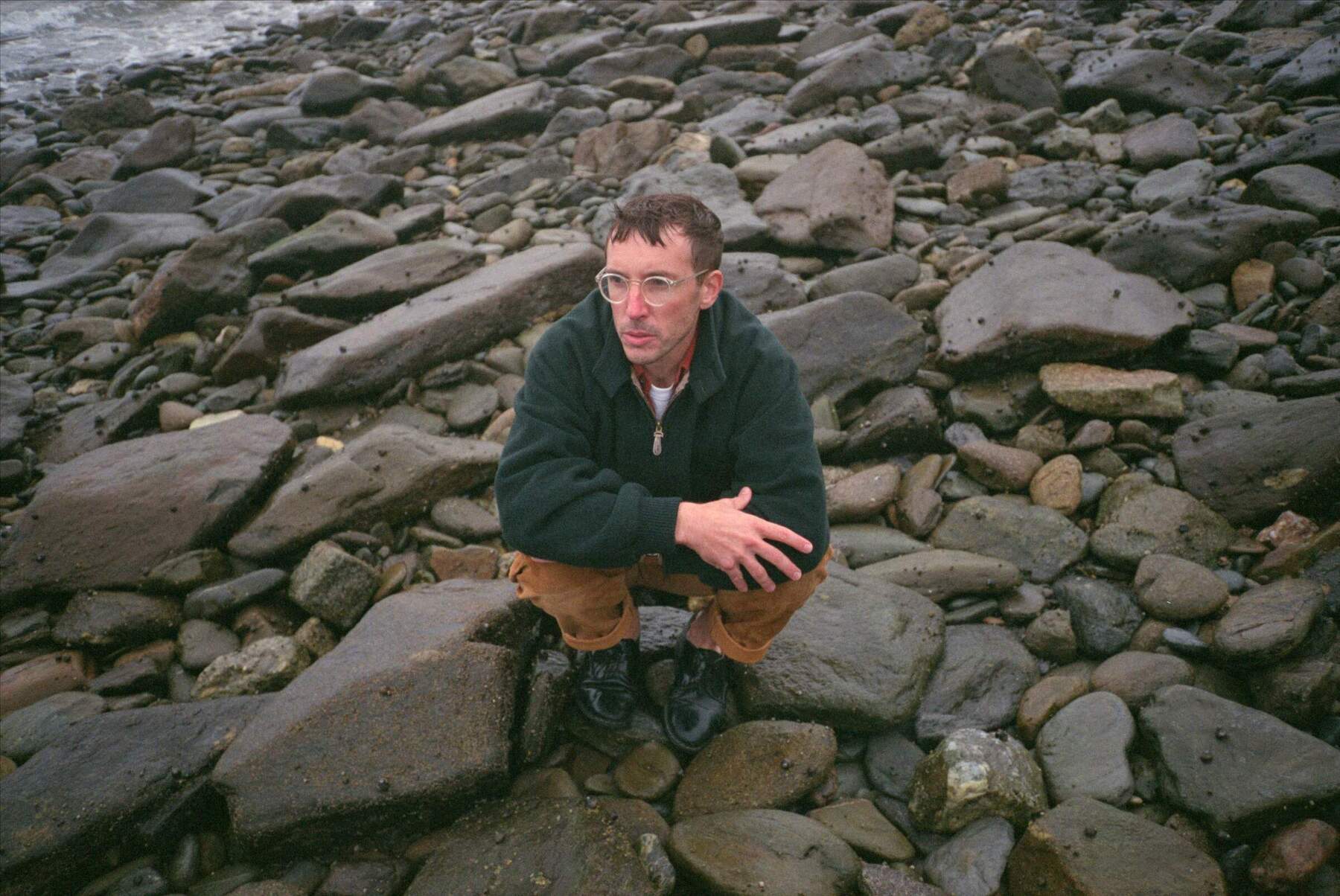Erik Lindgren interview about TNT, Moving Parts, Birdsongs of the Mesozoic and his record label called Arf! Arf!
Erik Lindgren is owner of Arf! Arf! Records. In his music carrier he has been a member of many different bands, including TNT, Moving Parts, Birdsongs of the Mesozoic. In following interview we spoke about his dedication to music. He is also a long time garage and psych collector.
Interview:
Thank you for taking your time for this interview. Well, first I would like to know where did you grew up and what were some of your influences?
I grew up in Camp Hill, PA which is a suburb of Harrisburg. In 1969, I attended Northfield Mt Hermon prep school in Western MA where I expanded my musical influences. It was there that I discovered the music of the Small Faces, Touch, the Who, the Stooges, along with composers Debussy, Satie, Stravinsky, and Varese. While attending my first year of college in 1972 at Tufts Universtiy in Boston,
Erik Lindgren-yearbook photo (1972)
I discovered the 13th Floor Elevators which totally blew my mind. I was also a subscriber to Alan Betrock’s fanzine “The Rock Marketplace” which also colored my musical influences with bands and artists including the Creation, Left Banke, John’s Children, The Herd, Big Star, and Curt Boettcher. While all this was going on, I was primarily studying classical music and active as a student composer and pianist. In 1976-’77, I worked on my MA in music composition at the University of Iowa which was a year of exponential personal growth.
Erik Lindgren and tuba at Northfield Mt Hermon School (1972)
Your first band is called TNT. You formed around 1969, right? How did you guys came together?
TNT was a group that existed from 1969 – ’76 when I was home for summer break from prep school and college. Drummer David Cole and bassist Dave Boyer were childhood friends from Camp Hill. I met our guitarist Jeff Lock through a mutual musical friend and he lived across the river in Harrisburg. The band was an excellent opportunity to try out some of my progressive musical ideas and we were really into doing original material.
We also had quite an eclectic repertoire including many of my personal discoveries. We were all best of friends and lived to play music. Our most active year was 1975 when we rehearsed all summer at Trinity Lutheran Church since our parents were members in good standing there. Nothing like rockin’ the church, ha!
Erik Lindgren looking mod with ukulele and silver platform boots (1975)
What was the scene back in your town?
Most of the local groups in Central PA were your standard cover bands influenced by the songs on the radio. TNT was rather unique since we focused on original songs and played a lot of obscure music from the ’60s. We looked back for inspiration rather than playing Led Zeppelin or Black Sabbath which were popular at the time. Each of the members brought in their specific influences. Dave Boyer was really into Yes, Dave Cole liked melodic bands like the Hollies, Jeff got us playing a few jazz standards, while I had us covering everything from punk rock to garage rock, to classical and even Ragtime. It was a very diverse combo and our covers were truly eclectic. It’s kind of mind-boggling to think that we got away playing songs by the Millennium, Stooges, early Who, Left Banke, the Choir, etc.
Would you like to tell me a story about TNT. You never released a single, right?
One summer we had a booking agent who got us a gig at a Rod and Gun Club way out in the boondocks. Our music wasn’t a good fit for the redneck crowd so we must have played “Johnny B. Goode” a half-dozen times. Eventually we won them over but it took some hard work on our part. I also remember doing a gig at a pizza parlor in Mechanicsburg PA in which Dave Cole had to set up his drum kit on top of the pool table. That must have looked pretty odd but the place was small and “the show must go on.” Another amusing gig was playing for the Holy Spirit Hospital benefit where we shared the stage with a Polka band, Wu Lung the Oriental Magician, Boo-Gee the clown, and a generic Country band.
Although TNT did quite a lot of recording from 1974 – ’76, we never released anything until our CD retrospective “Mod Psych Power Pop from Central PA” (Arf Arf AA-052) came out in 1995.
I would also like to know where did you record some of the early stuff that was released by Arf! Arf! Records. And what are some of the memories from it?
In 1973, we recorded a cover of the Choir’s “It’s Cold Outside” along with some other material in my parents basement on my original Sony sound-on-sound tape deck. In 1974 I purchased a Teac 3340 4-track recorder and the bulk of the CD was done in the basement of Trinity Lutheran Church in Camp Hill. In addition, we did 5 psychedelic cover songs (Moving Sidewalk’s “99th Floor, “Balloon Farm’s “A Question of Temperature,” Creation’s “How Does It Feel,” the Chocolate Watchband’s “No Way Out,” plus Roky Erickson’s “Starry Eyes”) in the basement of Bart Robert’s house in Camp Hill which included local guitarist George Mahar instead of Jeff. All of the later tracks on that dics were recorded in 1976 once again in my folks basement on the Teac which included guitarist Simon Clement from Denmark. We also had an opportunity to record a commercial in 1975 for the Capitol Area Transit at Baldwin Sound Studio which was a professional facility. While we had reference mixes of everything back then, the band reunited in 1991 and professionally mixed all of our music at Lyx Recording Studio in Worcester MA with engineer Bob Winsor.
I remember how hard we worked to get good takes of our music. I wanted acoustic piano for “Myrah” and “Pedestal” so we brought our tape deck up to the main social hall at the church and I overdubbed the parts. There is a funny story about those two songs which were meant to be Left Banke-sounding cuts which is documented in the TNT CD booklet. I even got a local singer Kirk Wynn who sounded very similar to Left Banke vocalist Steve Martin. We’re all real proud of the final product and remain best of friends still to this day.
Erik Lindgren with TNT members Dave Cole, Bill Lippincott (roadie), Jeff Lock, and Dave Boyer (2006)
Who did you perform with back then?
Our line up remained pretty consistent throughout our 6 years. Before Jeff Lock joined the band, we played with guitarist Brad Hamm for a couple of summers. And as I mentioned before, guitarist George Mahar played on our 5 psychedelic recordings from the winter of 1975. In 1973, bassist Dave Boyer was out of town and enrolled in a ROTC program, so we had one of my younger brother’s friends fill in on bass. That year we played the Grant City Battle of the Bands in Lemoyne which was a spectacle. I had an electronics friend wire up a cheap Teisco guitar with 4 Estes rocket engines and on our last song of the set, I triggered them with toggle switches and out poured 8-foot flames and smoke. Afterwards I grabbed a concealed axe from behind my amplifier and chopped the strings and neck of the guitar in half. Despite the antics, we didn’t place but certainly made an impression on the unassuming audience. Later I heard that the flame singed some kid’s hair so luckily we got away without any legal problems.
What happened next? I’m not sure, but your next band Moving Parts was only together for a year or so before splintering into Mission of Burma and Birdsongs of the Mesozoic. What can you tell me about it? It’s a great mixture of Art Rock and Punk…
I graduated from The University of Iowa in the summer of 1977 and wanted to test out some of my radical musical ideas mixing avant classical music and punk aesthetic. Through a mutual friend Chip Lamey I met bassist Clint Conley who was impressed that I recorded an anarchistic solo version of the Music Machine’s “Talk Talk” which happened to be one of his favorite songs. That fall we agreed to meet up at my folks summer house on Cape Cod along with drummer Boby Bear who I had known during my Harrisburg days. We auditioned for guitarists and ended up finding Mark Booth who fit in well with our musical vision.
After rehearsing solidly for a few months, we had our first gig in December, 1977 at the Lower Deck in East Dennis. The band debuted as “Boby Bear and his Fabulous Cones” and then played a short set for a Frenzy fanzine benefit at Cantones in Boston as the Space Negros. We immediately changed the name to the Moving Parts and relocated to a band house in Brighton Center.
During the memorable Storm of 1978 which shut down Boston for almost a week, Clint accidentally got hit by an oil truck in Cambridge and was laid up for weeks. Mark decided to relocate to California to pursue an old girlfriend. So the three of us placed an ad in the Real Paper and ended up meeting Roger Miller who was an excellent fit for the band. Roger was fresh from Ann Arbor MI and had supposedly given up music to pursue a career in piano tuning. He found our ad irresistable and we were blown away by his composition “Max Ernst,” which later became a staple for the Moving Parts and Mission of Burma. After 8 months of rehearsing and playing a dozen gigs, we decided that the band was moving in too many directions. So we played our Swansong gig at the Boston BF/VF in December of 1978 which was fortunately videotaped and our rendition of “Max Ernst” is posted on Youtube http://www.youtube.com/watch?v=eBaUw0o5Xuo
As with TNT, we recorded a lot of demos in our basement rehearsal space in Brighton along with booking a session to record some songs at Euphoria Sound Studio in Revere, MA. Those recordings were re-mixed in 1988 and eventually released on our “Wrong Conclusion” (Arf Arf AA-038) CD in 1992.
Moving Parts reunion at Boby Bear’s wedding (summer 2012)
Left to Right: Erik Lindgren, Clint Conley, Boby Bear, Roger Miller
Birdsongs of the Mesozoic is your most well-known band. You released some really great LPs. What can you say about being in this band and perhaps what are some of the strongest memories from producing and recording your LPs?
Birdsongs evolved as a side project to Mission of Burma and involved MoB members Roger Miller and Martin Swope. Originally we started in 1980 as a one-off recording project and cut 2 of Roger’s progressive instrumentals, “Pulse Piece” and “Sound Valentine,” in 1980 at my 4-track studio in Cambridge.
Not long after we were offered a gig to play a benefit and recruited one of Roger’s ex-bandmades Rick Scott from Ann Arbor who had also recently transplanted to Boston. We were offered a record deal with Burma’s label Ace of Hearts and did three vinyl records from ’83 – ’87 produced by Rick Harte. During that time Birdsongs did a lot of touring throughout the Eastern half of the US and made a splash in the indy rock scene despite our music being rather unorthodox for the time. We’d constantly have people come up to us after a performance and say “you’re not from around here are you” which amused us to no end! Playing excerpts from Stravinsky’s “Rite of Spring” plus our challenging avant-classical instrumental repertoire in club settings was indeed radical. But somehow we pulled it off.
Roger left the group in 1987 to pursue a solo career. So we added saxophone while I moved over to the piano throne. For a year we had another Ann Arbor-ite Steve Adams with the group and he was replaced by Ken Field when Steve decided to join ROVA Saxophone Quartet out in San Francisco. Our other personnel change was in 1991, when Martin Swope moved to Hawaii and was replaced by Michael Bierylo. But for the last 20 years the ensemble has remained constant.
In 1988, Rykodisc released a compilation disc of Birdsongs’ complete Ace of Hearts material and then got signed to Cuneiform Records in 1989. Since then, the group has remained active and produced 9 CDs, continued touring, and booking residencies at universities. Birdsongs has also collaborated with NPR/Duplex Planet’s David Greenberger on “1001 Real Apes,” and Atlanta bass baritone Oral Moses on “Extreme Spirituals.” We’ve been described as “the world’s hardest rocking chamber music ensemble” (NY Times) and our music has been referred to as “punk jazz classical car-wreck music” (Boston Globe). Birdsongs’ website is www.birdsongsofthemesozoic.org.
We’re playing ProgDay on Sept 1-2, 2012 in Raleigh NC and the link is http://www.progday.net/
You also have a very interesting solo albums out and I would love if you could talk about them…
Although I have worked with countless rock bands as a producer, engineer, and arranger, I’m primarily a contemporary classical composer and pianist which goes back to my original roots. 1991 saw the release of my solo CD “Oil On Linen” (AA-036), which is a half-hour chamber suite that humbly pays homage to Brian Wilson’s “Smile” along with including some extended surreal soundtracks.
in 1999, I started the SFZ label and issued “Erik Lindgren Scores!” (SFZ-001) which contains 7 original acoustic chamber compositions of mine. At that time I was working with live chamber music that had projected ambient visuals, and there is an accompanying disc in that package that includes the visuals for 4 of the works.in 2006, I released the Frankensten Consort’s “Classical-a-go-go (SFZ-004) which was my live performing quartet during the past 10 years. Once again, these are acoustic compositions scored for woodwind trio, piano, and percussion plus I’ve even resurrected some Birdsongs selections and rearranged them for the ensemble. We do an pseudo-hip hop rendition of the early ’70s Edgar Winter Band chestnut “Frankenstein” which over time has become our theme song. Rather than being “heady” complex compositions, I was more interested in creating (to quote Raymond Scott) “musical novelties,” which are accessible, fun to both play and listen to, and hopefully work on multiple levels.
My personal website can be found at http://www.sfzrecordings which includes a complete discography of records and CDs that i’ve been involved with along with a extensive listing of my compositions with many sound files.
Left to Right: Brian Wilson, Erik Lindgren, Andy Paley at Village Recorders, Los Angeles (1988)
Between Meals and The Space Negros are another projects you were involved with, right?
In 1981, I recorded and played on a spontaneous afternoon session at my studio in Cambridge MA that included Half Japanese’s Jad Fair, Andy Paley, David Greenberger, and Phil Milstein. This developed into a full-fledged vinyl release that we appropriately coined “Between Meals” and the tapes were sent out to Phoenix AZ where the Velvet Underground’s Moe Tucker added drums. It’s quite a curious bit of anarchistic creativity with a very eclectic cast of musicians–that’s for sure!
The Space Negros was basically my studio moniker circa 1974 – ’91 for a wide-range of essentially progressive/alternative music that touches upon 180-degrees of musical aesthetic–ranging from electro-punk, to ambient, to art songs, and even “Generic Ethnic Muzak.” Throughout the ’80s, I issued about a half-dozen vinyl releases along with licensing a Space Negros album “Polar Yet Tropical” in the UK to Glass Records. It’s quite a large body of work which the bulk of it has been archived on 4 Arf Arf CDs. I pretty much put that name to rest 20 years ago but it was a very prolific period of my life. In addition, I also produced a Space Negros 4-song 7-inch anti-Xmas EP in 1981 which got repackaged with additional tracks on CD as The Dark Side Of The Xmas Tree which you can find online. And the first Space Negros 7-inch EP “Maximum Contrast From Moment To Moment” (Sounds Interesting SIEP-001) was the Moving Parts and released posthumously in 1979. It’s definitely vintage art-punk and inspired by bands like Wire and Pere Ubu from the late ’70s.
I should also mention that during the late ’70s through the mid ’90s, I was very active and made the bulk of my living as a commercial composer/producer in Boston. Much of the music that I retained the rights to was collated and re-marketed on a 7-CD package called The Well-Tempered Music Library. In 1996 this was sold as stock music and contains 427 tracks which could be reused and recycled if the set was legally purchased. There’s a link to the WTML plus sound samples on the Arf Arf site if anyone’s interested in checking it out.
You are also a founder of great Arf! Arf! Records. How did that started and what are some of the future plans?
In 1979, I started Sounds Interesting Records with my partner/friend Chip Lamey who lives in southern New Jersey (Chip also hooked me up with bassist Clint Conley but that’s another story for another time). After doing a few releases together, he took over that label and I started Arf Arf in 1980. For the first dozen years, I used Arf Arf as a showcase for my productions and put out about three-dozen vinyl releases.
Then in 1992, I changed the focus of Arf Arf with the onset of the CD era and morphed it into a high-quality reissue label documenting ’60s US garage/psych, Outsider music, and “Radically Fresh Sounds.” Unlike many labels like Rhino, I try to release truly obscure regional music and document the “foot soldiers of ’60s rock” as opposed to the big hits of the day. To date, Arf Arf has produced six-dozen discs which can be found online at http://www.arfarfrecords.com.
I should add that for 40 years I’ve been a serious record collector and have amassed a personal collection of over 10,000 7-inch singles and 5,000 12-inch LPs which are primarily ’60s rock. I’ve always championed the odd and the obscure, so a good majority of these discs are on small, independent labels and quite obscure. It’s been a lifelong quest and I’m still on the prowl. While I’m not, per-se, a rocker, I do like putting things in perspective and have been able to build a world-class collection in that genre.
With Arf Arf, it’s really been a personally thrill to pull these archival packages together and I always like telling a band’s complete story and fill the booklets with lots of photos, memorabilia, and extensive liner notes. One of my favorite retrospectives is The Legends “High Towers” 2-CD set which came out in 2001. They were the undisputed top regional rock band while I was growing up and the Rock Titans of Central Pennsylvania. They also included a very young Dan Hartmann before he teamed up with Edgar Winter in 1972 and became a superstar musician and producer (R.I.P. 1995). If you had told me back in the late ’60s that the Legends would be on my future label, I’d have thought you truly mad! So it was incredibly exciting to work with their drummer Larry Sadler throughout the process, and he still keeps the Legends flame alive!
Thank you very much for taking your time! Would you like to send a message to It’s Psychedelic Baby Magazine readers?
Stay Groovy! And look backwards to move forward.
Interview made by Klemen Breznikar / 2012
© Copyright http://psychedelicbaby.blogspot.com/ 2012
Array



